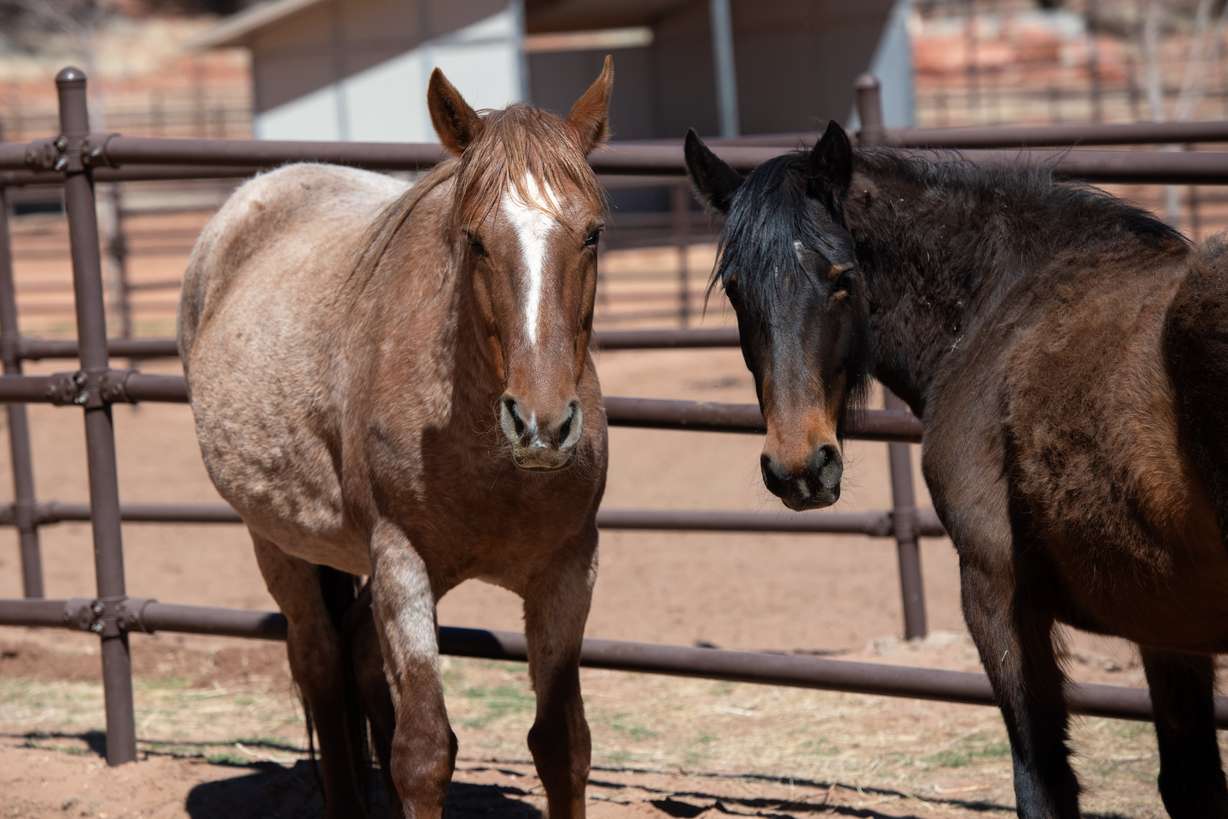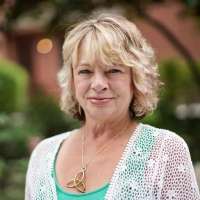Estimated read time: 4-5 minutes
- Solo, a mare stranded at Lake Powell for 18 months, was rescued.
- Best Friends Sanctuary in Kanab collaborated with locals for Solo's challenging rescue mission.
- Solo now befriends Emma, another rescued horse, at the sanctuary.
KANAB — Solo earned her name by being stranded on a beach at Lake Powell for 18 months.
The young mare lived a solitary life, hard for an animal that is gregarious by nature and has to have its herd buddies.
Her survival depended on the heartstrings she had nibbled at belonging to a group of Arizona residents who delivered her hay and contacted a sanctuary for rescue.
While the task of feeding the dark bay was accomplished easily enough, removal of an animal that typically weighs over 1,000 pounds was a different matter.
The residents enlisted Best Friends Sanctuary in Kanab, the nation's largest no-kill companion animal sanctuary and the headquarters of Best Friends Animal Society. The group is a leading national animal welfare organization working to end the killing of dogs and cats in the United States.
Getting a young, wild and confused animal would not be easy, and it would be harder to transport by boat to safety.
Horses are not seafaring creatures, and they don't do well dealing with the unknown.
A plan was hatched with the approval of the National Park Service and Navajo Nation to rescue Solo when the water levels allowed. That played out earlier this year.
"It was a very collaborative effort to rescue this one horse," said Jen Reid, senior horse manager at Best Friends Animal Sanctuary.

A game of "catch me if you can" played out for a few hours on the beach as volunteers worked to coax the skittish horse into a feeding pen that had been put up by the Navajo Nation. It took trust and patience.
"We took out some hay and pretended we were just there like any other day, and put hay in the pen, and gave her a few minutes, and she managed to go in, and we closed the gate," Reid said. "And then we really started the rescue. The private individuals that were helping with this had put together a plan with a couple of private boats and a small trailer that fits on the boats, and so we had some of that in place already."
Solo was loaded onto the boat, into the trailer and made the journey up to Best Friends in a 90-minute drive.
Once there, she was turned out into a corral to be by herself and decompress, Reid said.
"Remember, she's been on this beach by herself for 18 months, and there's a lot more traffic and humans and deer and turkeys and things to get used to here," Reid said. "So that was step No. 1, just let her settle in, get used to all the comings and goings and figure out life here in this much different environment."

Solo was eventually introduced to Emma, who endured a similar rescue from Lake Powell two years ago.
Reid, in a video depicting her holding a lead rope and petting Emma, said the horse is no longer wild and craves treats and affection.
Best Friends thought the best thing to do is to get the two beached horses acquainted, not only because of their shared experience but because Emma could teach Solo a thing or two about trust.
"Personality wise, we thought that they would be a match, and diet wise. Emma being tame and friendly is a really good example. It's not helpful when you have two horses that neither one of them wants to be around us; they can kind of feed off of each other," Reid said.
"So the fact that Emma loves people now and is friendly and comes up and volunteers to say 'hi' has already helped Solo be more curious about us," she said. "Solo, happily, is a pretty chill individual; even though she's wild, still, she's pretty relaxed about things. That doesn't mean that we try to march right up to her and touch her yet, but she's really settled in nicely into this new environment."
Reid said she often gets asked why the animals were not returned to the Navajo Nation, where they likely came from, but the nation is overwhelmed by its number of wild horses, just as Bureau of Land Management is with its stockpile of wild horses in holding pens numbering an estimated 80,000.
The Navajo Nation estimates that there are upward of 70,000 horses roaming wild over nearly 27,000 square miles. These horses, like many other animals, have to forage for their own food and water in an arid environment, displacing native wildlife.

The horses are not protected under a 1971 federal law but remain the jurisdiction of the tribal nation.
The situation has become dire.
In 2018, UPI reported that nearly 200 feral horses were found dead in a dried out stock pond they had sought for water.
"These animals were searching for water to stay alive. In the process, they unfortunately burrowed themselves into the mud and couldn't escape because they were so weak," said Navajo Nation Vice President Jonathan Nez at the time of the discovery.
Reid said the Navajo Nation asked Best Friends to keep both Emma and Solo. Both the animals will be domesticated and if suitable, available for adoption, Reid said.









